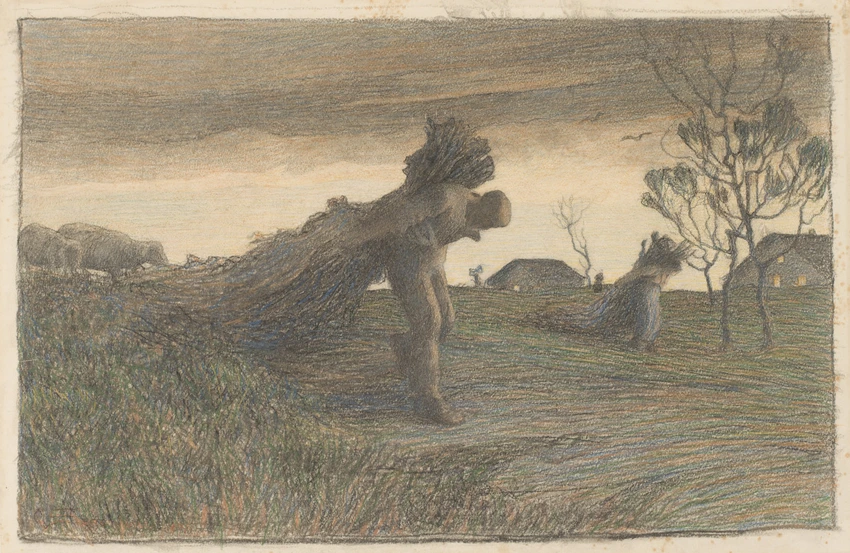Le Dernier Labeur du jour
In 1880, Segantini left the city - Milan - for la Brianza in the foothills of the Alps. Between 1886 and 1894 he lived in Savognin in the canton of Grisons, before moving on to spend the rest of his life, higher still, in the mountains of the Engadine.
This pastel of 1891 reuses elements previously found in two of his earlier paintings from 1880-1882, a practice often employed by Segantini. One represents a woman carrying a bundle of wood, repeated on the right, and the other, a shepherd, bent under the weight of the wood he is carrying and followed by his sheep.
The artist, who was not a peasant by upbringing, was originally influenced by the Naturalism of Millet, whose works he had seen in reproductions. He later freed himself from this influence and moved towards a meditation on nature, with the aim of revealing a mystical, pantheistic vision.
Here, the characters as well as the animals seem to dissolve into the landscape, whilst the thatched cottages in the distance, with their windows lit, offer a glimmer of hope and life. This interpretation of the rural world is similar to that in Zola's novel The Earth of 1887, which Segantini had read and enjoyed.
